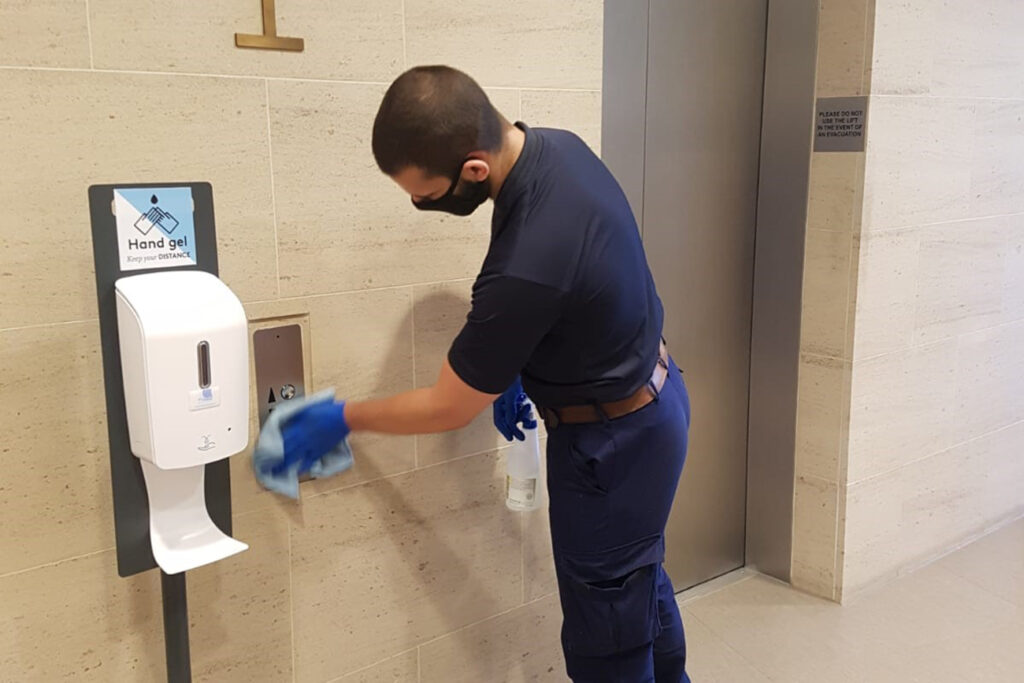cleaning, sanitising or disinfecting?
30 June 2020
Who you are and what do you do?
Cleaning has never been such a high priority to most of us as during the Coronavirus crisis and this is likely to be enhanced during the return to work. As more workplaces start their return, significant numbers of employees will be concerned about cleaning standards and a recent YouGov poll surveying office-based employees found that nearly half (44%) are concerned about hygiene and cleaning standards in the office.
Many companies new to the cleaning industry have started to offer disinfecting, sanitising and cleaning services during the pandemic, and these terms are increasingly being used synonymously with each other. However, there are significant differences and a number of considerations must be taken into account, in maintaining a safe and hygienic working environment.

Cleaning is the most basic level and the term is often used quite generically. It is a process that removes contaminants including dirt, soil, micro-organisms and the organic matter that shields them, such as faeces and body fluids. A surface may look clean, but protocols and standards are required to ensure effective cleaning has been carried out, achieving the required hygiene levels. Cleaning should result in 99% of bacteria being killed, so 1 in 100 may survive.
Sanitising is the reduction of bacteria and germs to a safe level, based on public health standards. 99.99% of bacteria should be killed.
Disinfecting goes one step further and destroys bacteria and germs, usually with the application of a chemical. It does not necessarily destroy all bacteria, viruses, fungi and moulds, so it is important that the chemical chosen is appropriate for the contaminants which may be present.
You cannot disinfect a surface without it being thoroughly physically cleaned first, as the physical soil needs to be removed. As an example, NHS cleaning and disinfection procedures state that “disinfection is a process that reduces the number of micro-organisms to a level at which they are not harmful and is only effective if the surface is thoroughly cleaned with a detergent solution beforehand.”
Surfaces can be disinfected manually by cleaners, using appropriate materials whilst wearing PPE, and Public Health England’s Covid-19 guidance is based on physical cleaning. Regular, detailed disinfection is appropriate for high touch point areas such as door handles, lift call buttons, hand rails and shared office equipment, to reduce the risk of hands spreading the virus.
Disinfection can also be carried out by fogging or electrostatic spraying, where chemical droplets are dispersed through the air. Electrostatic spraying creates charged particles which are attracted to surfaces, where they coalesce, providing complete coverage. During fogging, a chemical mist is applied directionally into the air, but areas are more likely to be missed than with electrostatic spraying. Neither process will be effective if the surfaces have not previously been manually pre-cleaned.
With the complexities and attention to detail required, experienced professionals are needed to help maintain a safe and hygienic workplace. NJC has the expertise to carry out daily cleaning, high touch point disinfection and specialist decontamination, should a Covid-19 case be confirmed, all delivered by directly employed resources. Whilst coronavirus remains in circulation it is vital to reduce workplace risks and remember that It’s Not Just Cleaning!
Need help?
Our team are here to help with any questions, and to show where NJC can add real value to your company and customer experience. So why not get in touch via chat, our online form or call us on 0345 395 1000 and one of our sales team will be happy to assist.





